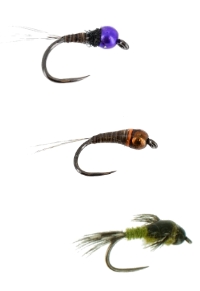Crab Flies
The crab fly is a favorite among saltwater fly fisherman. Like all other types of flies, they come in a variety of sizes, shapes, and colors. Choosing the right one can mean the difference in catching fish and not catching fish. Not only is choosing the right one important, but how you fish it is also imperative for success.
When you are fishing with a crab fly, typically you are chasing one of saltwater’s big three. Tarpon, Bonefish or Permit. Crab fly patterns can vary greatly depending on what species you are pursing, and where you are pursing them at. Of course, weather and water conditions can factor into this as well.
Tarpon like big saltwater crab fly patterns! They usually like them floating or riding high in the water column as well. Saltwater crab flies for these guys should be tied on big heavy-duty hooks, and in shades of grey, blue, olive, and brown. Little to no flash is a must, as tarpon seem to shy away from tarpon flies with lots of flash. The main thing is to present these flies to “Happy” fish.
Crab fly patterns for Permit are very important. They are a primary food source for these fish, so they are used to seeing them often. Crab fly patterns for this fish species must look identical to the ones they are eating. Permit are usually found in two to four feet of water, so saltwater fly fishing flies tied with lead eyes are usually a better choice for chasing these creatures. They can also sometimes eat with wreckless abandon when in deeper water, like say on sunken ship wrecks, so it’s always a good idea to keep a sinking fly line on hand if you decide to get down and dirty with these fish.
For Bonefish, a crab fly is are usually tied in natural shades of brown, grey, and green, with little to no flash added to them. They usually have bead chain eyes attached to them to help them sink, but not create a splash like a bowling ball hitting the water. The key is to present a different crab fly each time without spooking fish. When you are targeting bonefish, they will primarily be found in 6 inches to two feet of water, so minimum disturbance of the water is very important.






